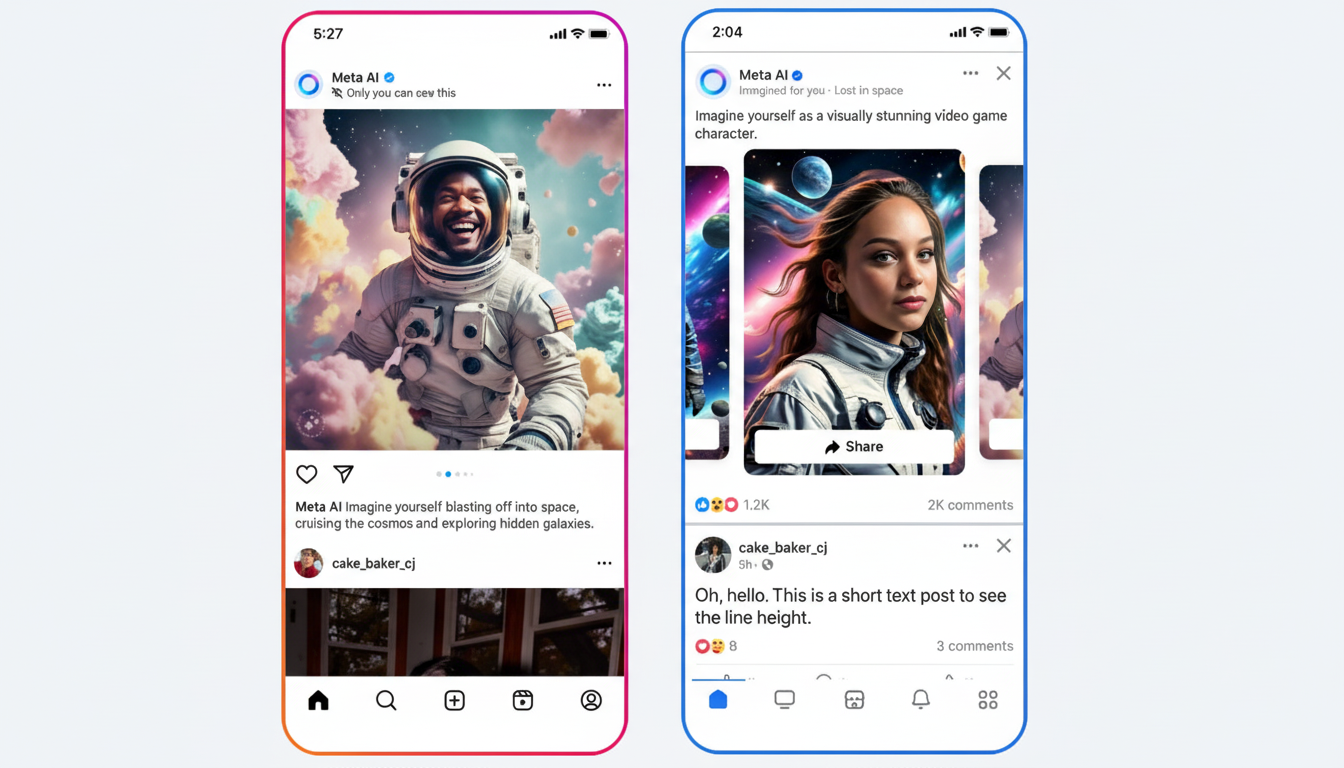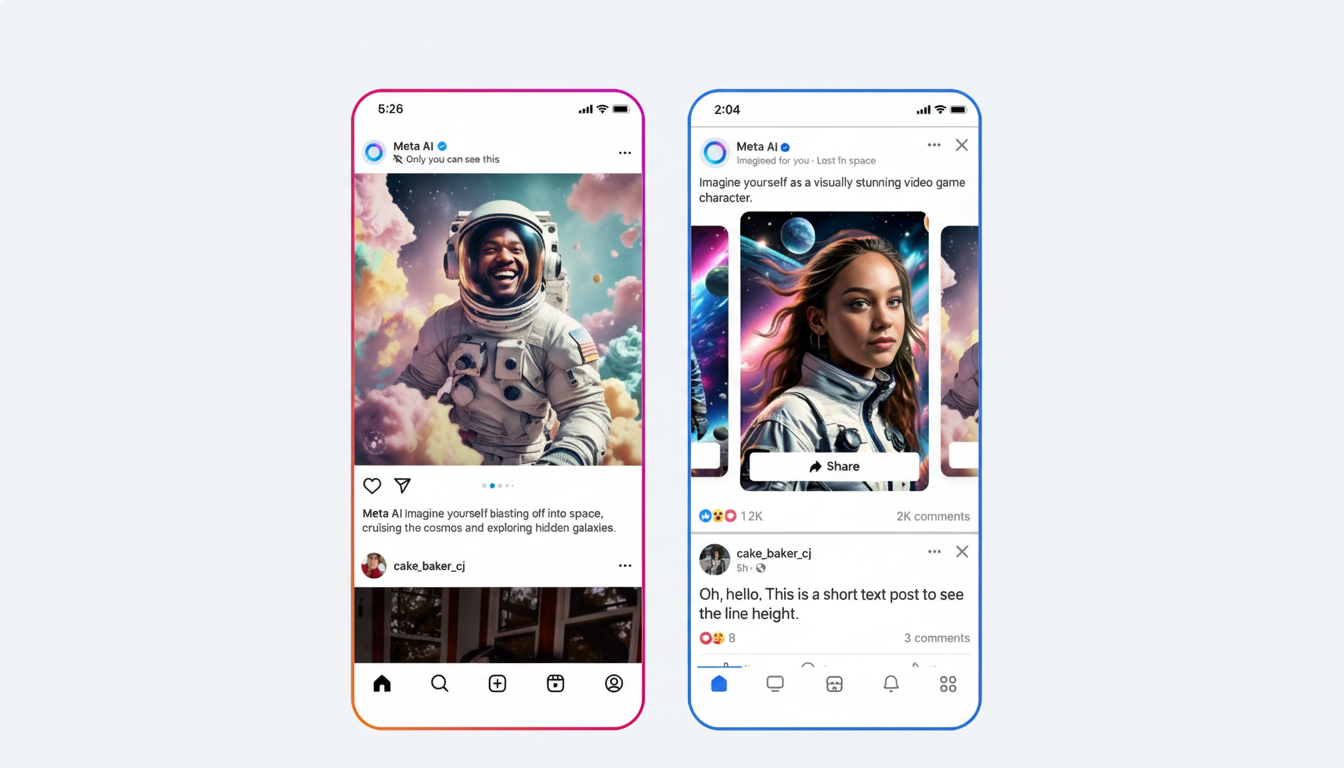Meta is poised to integrate more AI-generated and AI-remixed material into Instagram and Facebook feeds, a metaphorically strategic manoeuvre that Mark Zuckerberg informed investors is merely the next phase of social networking. In short, the company’s recommendation engines will have to grasp and rate a significantly bigger pool of synthetic and hybrid media, altering what billions of people view in their feeds.
Meta says that those feeds will become even more dependent on ranking systems capable of interpreting tone, intent, and user ambitions and then generating the most engaging combination available, whether humans or models have taken the images. Zuckerberg states that the first epoch of social networks, focusing on friend-and-family posts, was followed by a new model-centric design. He claims that the third stage will layer a tidal wave of AI-generated content on top of both.

This signifies that when creators save hundreds of hours of pre-production and post-production time as generative software makes capturing more content quicker, Meta thinks there will be a gush of short videos, photos, and text posts that have been modified, remade, or wholly produced by a model. As Meta’s creative output increases, the company believes that its renewed rankings will grow more useful, increasing the number of hours users spend in the app and more advertising options.
What more AI in Instagram and Facebook feeds looks like
Expect AI-assisted photo sets, stylized video edits, and mashups that use trending audio and formats. You might stumble upon posts that are co-shaped by AI assistants—summaries, prompts, and contextual “explainers” that reside next to creator content. Meta will rely on visual signals and labels to show when a post is generated or heavily edited using AI.
Meta also referenced Vibes, an AI-driven creation and content experience, as an initial glimpse into where feeds are headed. The company reported that usage is increasing week over week and that retention is promising. There is reason to believe that lightweight creation—and instant remixing—may become a key loop for infrequent users and not just power creators if they continue its goal of using feeds to democratize content creation.
Meta’s growing AI infrastructure and spending plans
This is the logic of Meta’s business, proceeding on to its infrastructure. This strategy relies on two vectors that are both reinforcing: an increase in content access and an increase in ranking capacity. More supply offers recommendation systems more “shots on goal” to fit user intent. Better ranking makes it easier to personalize at scale, threading over the feeds of millions of genre microcultures in real time.

Meta has been steadily investing in AI infrastructure. The company informed investors that it expects to spend heavily on data centers, networking, and accelerators. AI is their highest capital expenditure priority, guiding an estimated $35–$40 billion in 2024. Given the family of apps already reaching over 3 billion people daily at the beginning of 2022, even minor improvements in relevance can have significant impacts on engagement and revenue.
More synthetic media and tougher safety challenges ahead
Meta intends to expand “Made with AI” disclosures and apply provenance standards such as C2PA amid regulatory pressures. The company expects tougher safety challenges, with regulatory authorities pressuring the company to provide greater clarity. Organizations, too, put on the pressure when election cycles and public emergencies raise the stakes.
The Partnership on AI, for example, has advocated for platforms to adopt watermarking, provenance, and rapid-response review in response to deceptive AI content. For creators and advertisers, the shift likely rewards volume, experimentation, and remix-friendly formats. Meta is clear: recommendation signals favor posts that inspire derivative works and discussions. Preclearance of AI assistance will become increasingly important for creators who want to inspire collaboration.
For advertisers, a broader content pool increases quality inventory and more precise targeting but raises brand-safety concerns. Meta has an eye on how well-oriented brand-safety tools let advertisers calibrate adjacencies to synthetic spaces. Details about how Meta will control synthetic and deceptive impacts or synthetic placements remain unclear.
Meta reimagines feeds as friends, creators, and machines
Meta’s other idea is that such an AI-fueled feed would be richer, faster, and more diverse, keeping users scrolling longer and creators generating more ideas. As a result, the firm’s entire strategy entails reimagining social media as a three-layer stack of friends, creators, and machines. How well Meta’s processes can uncover what individuals truly want and distinguish between a person, a creator, or a machine will determine whether the blending seems aspirational or exhausting.

